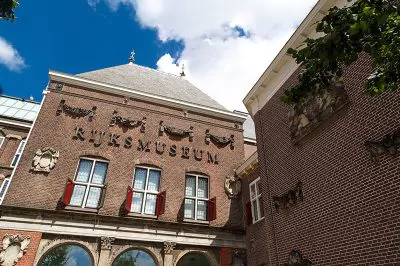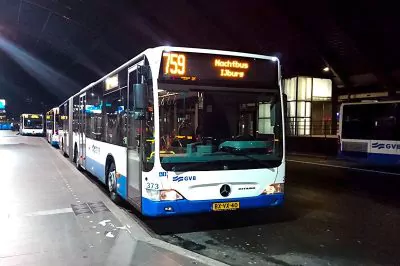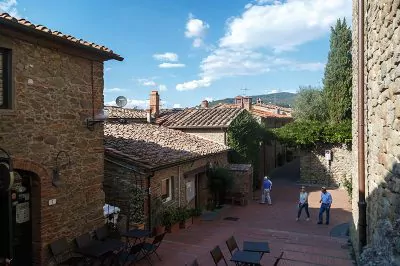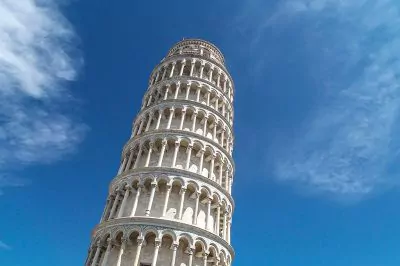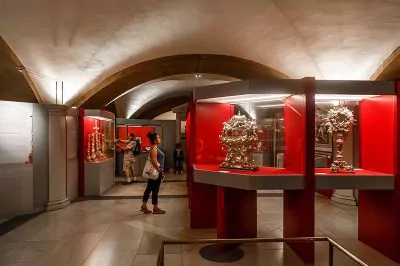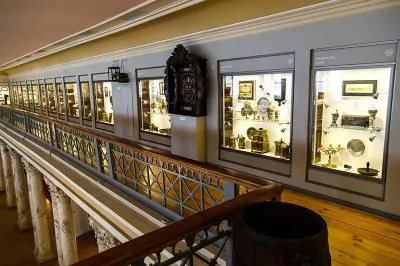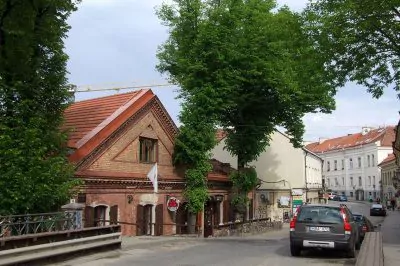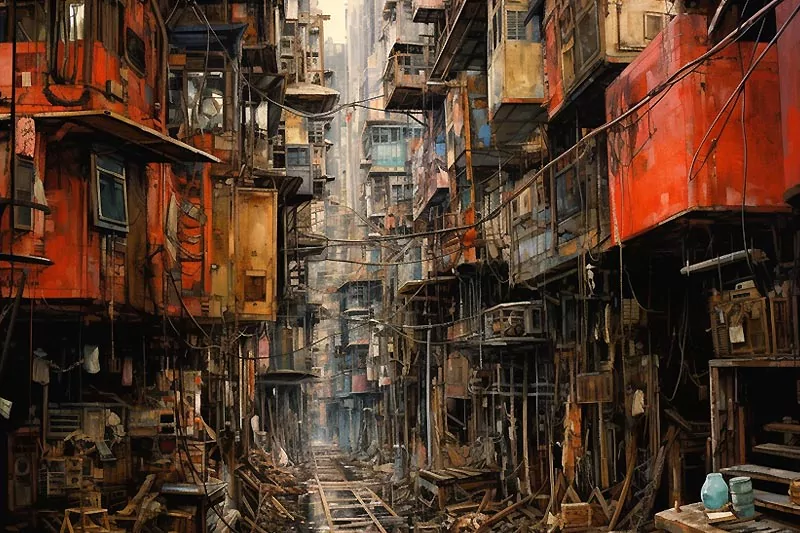
From Urban Enclave to Park: The Story of Kowloon Walled City
Located in Hong Kong, Kowloon Walled City was a wonder of human ingenuity, adaptability, and resilience, and its fame – or rather, infamy – has endured even after its disappearance.
This enigmatic metropolis was famous for its remarkably high population density, labyrinthine architecture, and a reputation for lawlessness.
In this article, we’ll explore the rich tapestry of Kowloon Walled City’s history, what life was like within its walls, and why it captured the world’s imagination.
Historical Background
The seeds of the city were sown during the Song Dynasty (960-1279), as a small military outpost meant to monitor salt trade. Over time, the outpost grew into a fully-fledged fort, with walls built in 1847 during the Qing Dynasty.

The city’s intriguing political status originated from a unique historical circumstance: it remained part of Chinese territory after the British took control of the New Territories in 1898.
Over the course of the 20th century, the walled city evolved into an urban enclave, burgeoning and expanding in rather haphazard ways, especially after World War II when refugees flooded in, seeking a life within its protective walls.
The City’s Unique Architecture
One of the most striking characteristics of the city was its unique, even bewildering architecture. The city was densely packed, with over 300 interconnected high-rise buildings crammed into a space of just 2.6 hectares (6.4 acres).
These structures, often built without the guidance of architects or engineers, rose to heights of 10 to 14 stories. The result was a cityscape resembling a giant hive, with narrow, maze-like alleys, corridors, and staircases weaving their way between the buildings.
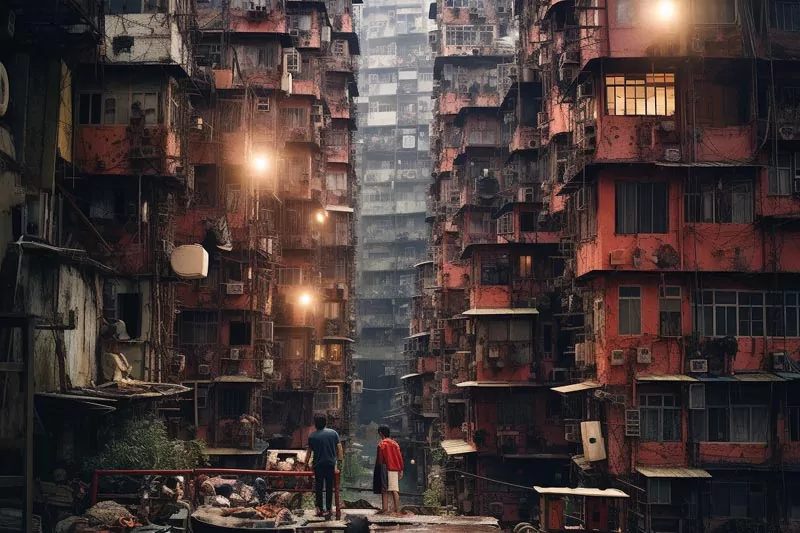
Many of these alleys were barely lit, with some receiving no sunlight at all due to the towering structures on either side. Nevertheless, the city was a testament to human adaptability, as thousands of people managed to carve out their existence in this vertical urban jungle.
Life Inside Kowloon Walled City
Step into the shoes of the residents of the city, and you’d find a life that was a potent mix of hardship and resilience.
Despite the city’s outward appearance of chaos, the residents created an intricate web of everyday life that was as normal to them as any other city to its dwellers.
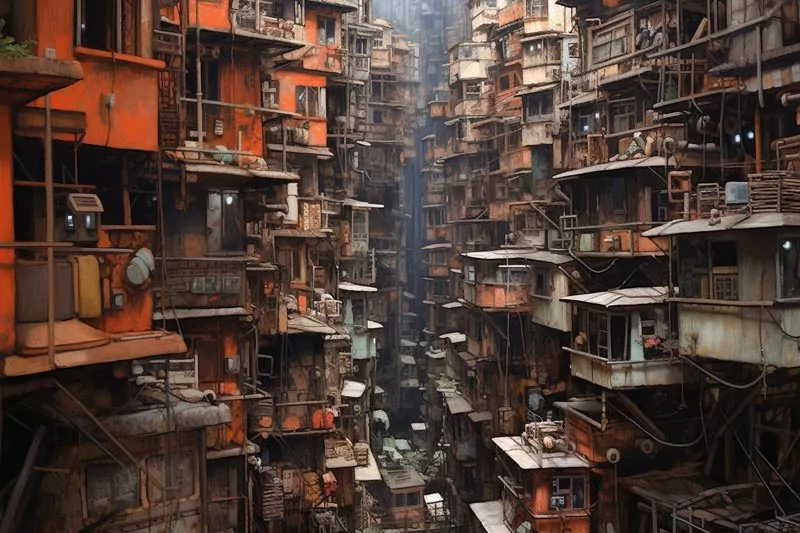
Families, businesses, and community gatherings all made their home amidst the towering structures.
Despite the cramped conditions, the community thrived, creating schools, shops, and even temples in the nooks and crannies of the city. It was indeed a life of improvisation and resourcefulness, where every square inch had its purpose.
Kowloon Walled City: The Lawless Enclave
Yet, the city had its dark side, earning its reputation as a lawless enclave. The city was known to be a hotbed of illegal activities, given its unique political status and lack of government intervention.
Crime syndicates, such as the Triads, reportedly operated out of the city, running illicit businesses like gambling dens, brothels, and opium dens.
Despite this reputation, many residents argued that the city was generally a safe place to live, with a strong sense of community solidarity often acting as a deterrent against rampant crime.
The Economy of Kowloon Walled City
Diving into the economy of the city, one would find an incredibly vibrant informal sector. Despite the challenging living conditions, residents found ways to make a living.
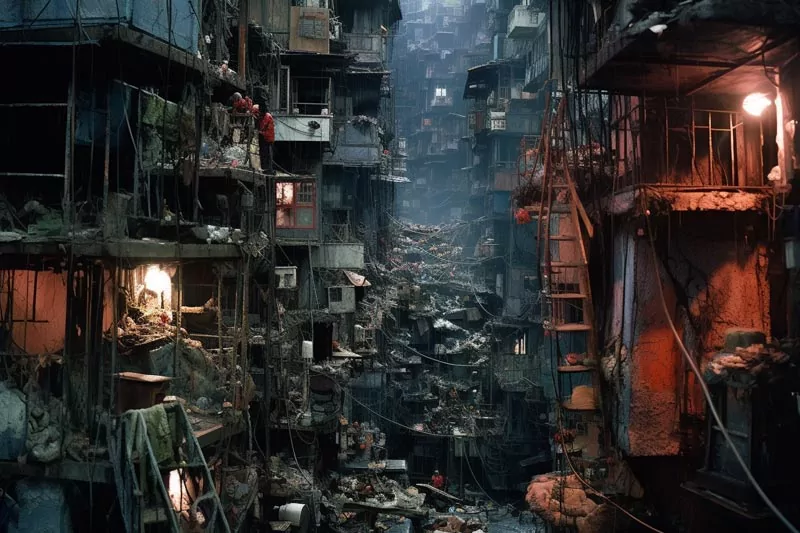
Numerous small businesses flourished, from food stalls and tea shops to traditional medicine stores and barber shops. Many residents were also employed in various home-based industries such as textile and plastic goods manufacturing.
This self-contained economy, powered by the determination and resilience of the city’s inhabitants, allowed the city to thrive against the odds, forming a crucial part of its distinctive character.
The Decline and Eviction
By the 1980s, the notoriety of the city had peaked, and its living conditions, public health issues, and rampant crime were attracting attention far beyond its walls.
In 1987, the Hong Kong government announced its decision to demolish the city, aiming to tackle the unregulated urban chaos and unlawful activities.
This was followed by a prolonged eviction process, with residents being offered compensation to relocate. This period marked a significant decline in the city’s life, a countdown to an inevitable end.
Demolition and Aftermath
The demolition of the city commenced in 1993 and was completed by April 1994. The once bustling city, teeming with life, was reduced to rubble and memories.
The eviction and demolition displaced around 33,000 residents, who were relocated to new housing estates. The site remained vacant for several years following the demolition, a quiet testament to its tumultuous past.
Kowloon Walled City Park: A Modern Tribute
However, the story of Kowloon didn’t end there. In 1995, the site of the former the city began its transformation into a historical and cultural park. Opened in December 1995, the Kowloon Walled City Park serves as a modern tribute to the city’s unique history.
It incorporates elements from the original city, such as parts of the old wall and the South Gate, the city’s main entrance.
Visitors can now stroll through beautiful gardens, observe artifacts, and learn about the walled city’s fascinating history, a far cry from the chaotic, dense urban environment that once stood in its place.
Legacy of Kowloon Walled City
Even decades after its demolition, the legacy of the city lives on, not only in the hearts and memories of its former inhabitants but also in global popular culture.
The city’s dense, towering architecture and notorious reputation have inspired numerous works in literature, film, video games, and music.
Its intricate maze of alleyways and the sense of a bustling, self-contained city have proven to be fertile ground for the imagination, helping the walled city to endure in the cultural consciousness.
Visit the Site Today
If you want to experience a piece of this unique history, consider visiting Kowloon Walled City Park today. Located on the very grounds where the city once stood, the park serves as a reminder of Kowloon’s unique past and pays homage to its legacy.
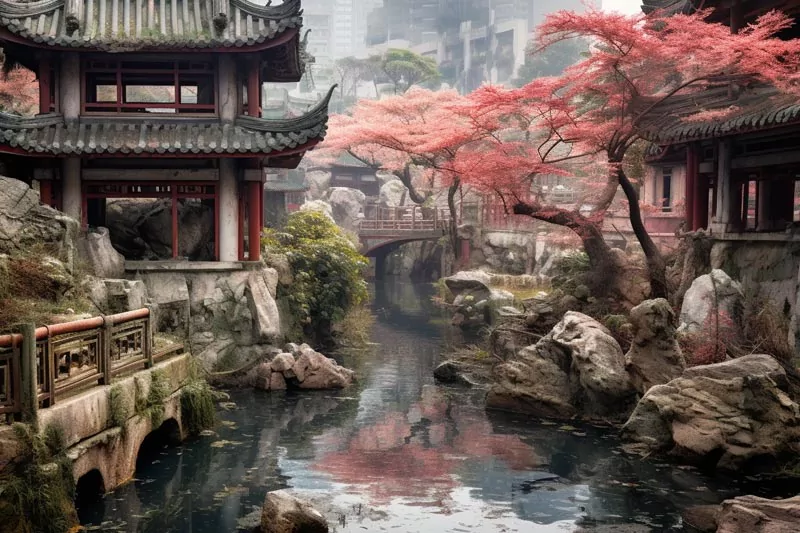
You’ll find beautiful traditional Chinese gardens, remnants of the original city walls, and informative plaques detailing the city’s history. Visiting the park is not only a walk through beautiful surroundings but also a journey through a remarkable chapter in urban history.
Conclusion
In the end, while the city no longer exists in its original form, its spirit lives on in Kowloon Walled City Park and in the rich tapestry of stories, memories, and media that it has inspired.
The city’s fame and infamy stem from its unique architecture, vibrant community, challenging living conditions, and status as a lawless enclave.
Despite its issues, Kowloon Walled City remains a remarkable example of human resilience, adaptability, and creativity. It’s a city that has etched its place in history, and its legacy continues to captivate us to this day.

